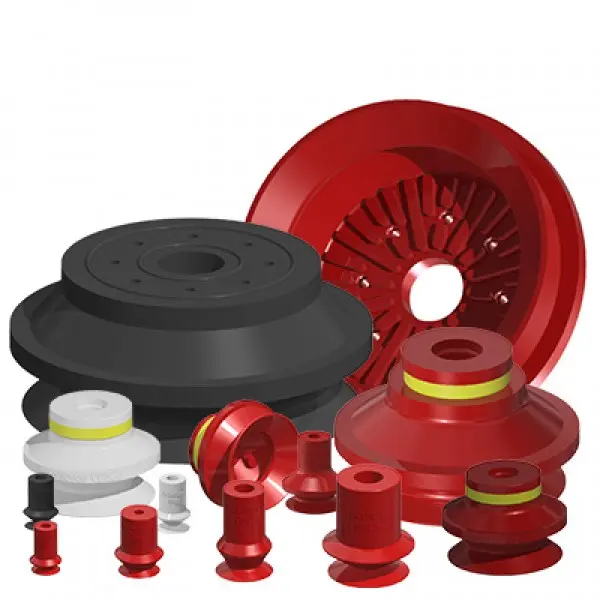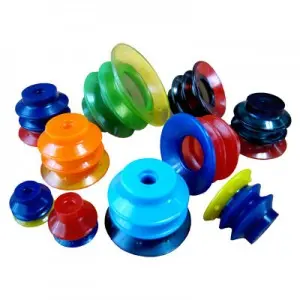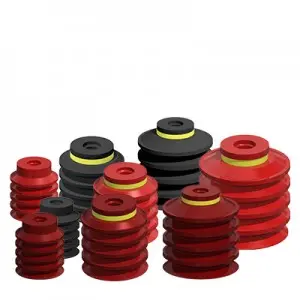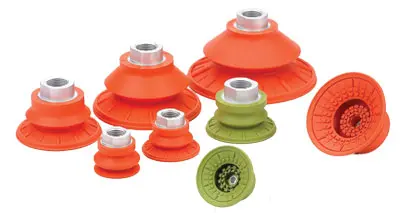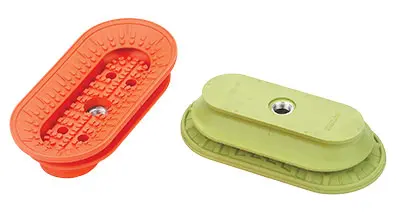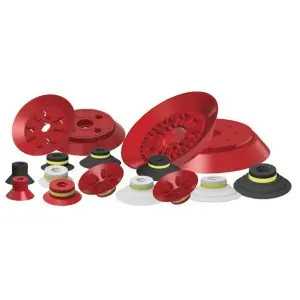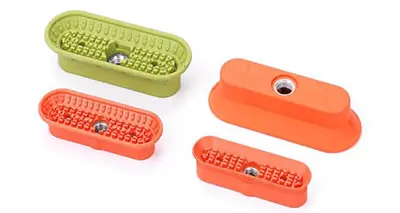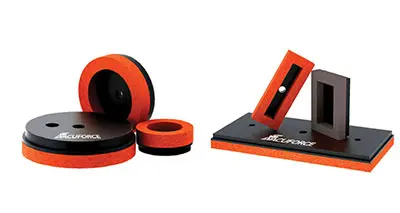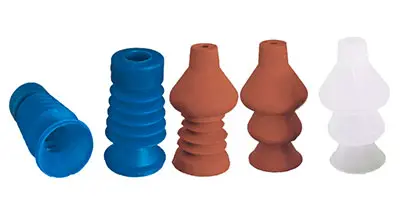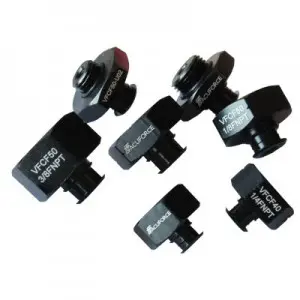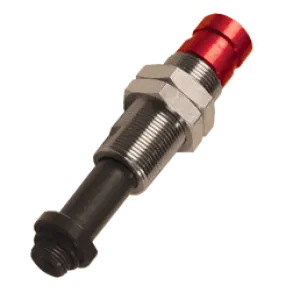Vacuum Cups
|
|
Selecting the Right Vacuum Cup Material and Style
There are various reasons for choosing a particular vacuum cup material for pneumatic components, but the two most important factors are hardness and temperature resistance. Hardness determines the ability of a vacuum cup to seal against the surface of the product being handled. The scale used to identify the hardness of vacuum cup materials is Durometer Scale A, which ranges from 100 (hard) to 5 (soft). Vacuum cups are typically available in compounds with a hardness between 35 to 70 Durometer.Temperature resistance determines whether a vacuum cup can handle the temperature of objects being picked up.
Most pick-and-place applications occur at “room temperature” but other industries, like plastic injection molding, involve handling high-temperature materials. At the other end of the scale is the handling of cold products, such as refrigerated or frozen food packaging. Typical vacuum cup materials have a temperature range from -40ºC to 204ºC (-40ºF to +400ºF).
Explore the categories below to find the right vacuum cups for application. If you have questions, please contact us to discuss your requirements.
Vacuum Cup Materials for Pneumatic Components
Every application has different requirements for hardness, temperature range, and chemical resistance. Manufacturers typically use these pneumatic vacuum cup materials because they exhibit the properties required for most manufacturing and food production applications.NBR Vacuum Cups
NBR is used in general industrial applications such as steel handling, plastics handling, and any other application requiring a vacuum cup material resistant to oils and related chemicals. In most applications, this is the “go-to” material choice based on its fair cost and good wear resistance. The hardness of this compound is typically 60 durometer, although this can be as low as 40 or as high as 70. NBR is often overlooked for high temperature applications such as injection molding where user specifies an extremely high temperature and therefore opts for silicone. NBR is suitable for most plastic injection parts handling as its temperature rating often exceeds 90ºC/200ºF.Silicone Vacuum Cups
SILICONE (Vacuforce code suffix S & ST) is a popular vacuum cup compound because of its extreme temperature range of -40ºC (-40ºF) to 204ºC (400ºF). This wide range makes this vacuum cup material ideal for handling everything from frozen packaged food and hot plastic-injected molded parts. Silicone is softer than NBR with a typical Durometer rating of 40, allowing it to seal against contoured or rough surfaces, such as cardboard sheet, corrugated plastic, and plastic food packaging.Vacuforce silicone is offered as standard with FDA (title 21) compliance to allow direct contact with food and drug products. Color Codes: Vacuforce Code S - Red Silicone, Vacuforce Code ST - White Translucent.
Metal Impregnated Silicone Vacuum Cups
METAL IMPREGNATED SILICONE (Vacuforce code SMI & STMI) has the same basic characteristics as standard silicone but was designed specifically for the food industry. Iron filings inside the silicone compound allow metal detectors to sense that a vacuum cup has fallen into the food packaging.An important note about silicone is that it should never be used on surfaces which will be painted, as the paint will not bond properly on the area touched by the silicone vacuum cup. Also, silicone should not be used to handle decorative stone such as marble or quartz, or glass products, as it will permanently etch the surface. Color Codes: Vacuforce Code SMI - Red Silicone, Code STMI - White Translucent.





